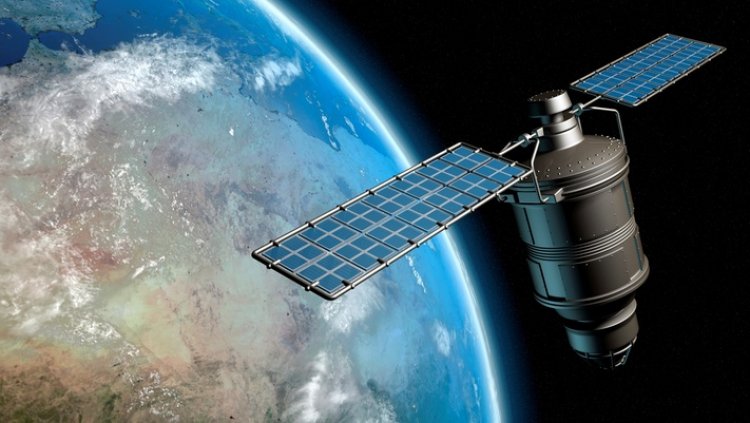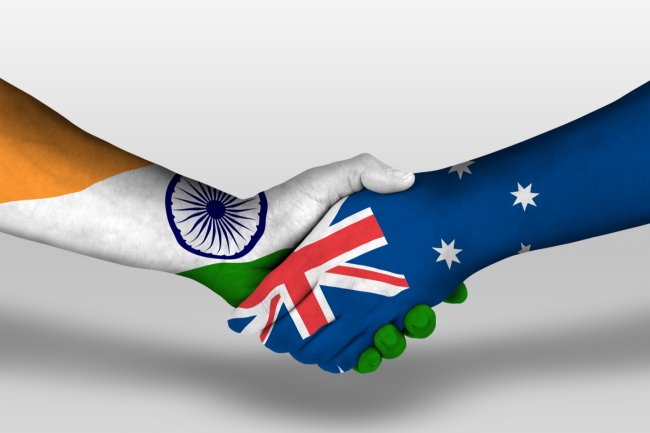By 2025, the geospatial industry in India is projected to generate over 10 lakh jobs and over Rs 63,000 crore, a growth rate of 12.8 percent.
There are around 250 Geospatial start-ups in India showing how this technology may be used in various fields, such as garbage collection, tree planting, city planning, and road mapping.

It is anticipated that India's geospatial economy will reach Rs 63,000 crore by the year 2025, expanding at a pace of 12.8%, and will create employment for more than 10 lakh people, primarily through geospatial start-ups.
At the Second United Nations World Geospatial Information Congress (UN-WGIC 2022), which took place in Hyderabad today, the Union Minister for Science and Technology and the Ministry of Earth Sciences, Dr. Jitendra Singh, made this announcement.
Over 2,000 delegates, including 700 or more foreign delegates and attendees hailing from over 150 nations, are present at the conference that will last for five days. In addition, National Mapping Agencies (NMAs) such as the Survey of India, which has an illustrious history spanning 255 years, senior officials, non-governmental organisations, academic institutions, and industry, user, and private sector representatives from all over the world are participating in the Geospatial Congress.
According to Dr. Jitendra Singh, there are approximately 250 geospatial start-ups in India at present time, which is part of the current boom of technology-led start-ups. Today, the Minister announced a geospatial incubator in order to give this industry an additional boost.
The Minister mentioned that several national organisations, such as the Survey of India, the Geological Survey of India, the National Atlas and Thematic Mapping Organization (NATMO), the Indian Space Research Organization (ISRO), and the National Informatics Centre, had implemented several GIS-based pilot projects in a variety of fields, such as waste resource management, forestry, urban planning, and other areas, in order to demonstrate the applications of Geospatial Technology. Among these fields were: urban planning, waste resource management, and forestry
According to the Minister, the government, industry, researchers, academic institutions, and civil society are all working together to construct a high-quality geospatial ecosystem in order to build crucial solutions. He stated that the democratisation of the Indian geospatial ecosystem would stimulate domestic innovation, enable Indian companies to compete in the global mapping ecosystem by leveraging modern geospatial technologies, and bring about the full realisation of the dream of "Atmanirbhar Bharat" or "Self-sufficient India."
Dr. Jitendra Singh emphasised the importance of geospatial technology and the Geographic Information System (GIS), saying that these will have a big impact on how India adopts new technology and moves forward. He stated that everyone around the world is looking to India to see how it is utilising technology to tackle some of the world's most pressing humanitarian and environmental issues. The Minister went on to say that despite the fact that geospatial technologies have been produced, used, and managed in the country for more than half a century, the revolutionary steps that the Government of India has taken towards geospatial democratisation, advocacy, and integration over the course of the past few years have given a new momentum to this sector.
According to Dr. Jitendra Singh, the Rural Development Ministry has mapped over 45 lakh kilometres of rural roads by utilising 21 data layers of the map. This has resulted in the digitization of information regarding water bodies, green areas, plots, and other structures that are necessary for administrative purposes. Additionally, he disclosed that the Ministry of Rural Development had mapped and digitised the records of roughly 2.6 lakh gramme panchayats as part of a new initiative. According to the Minister, developing technologies in the geospatial sector have brought about revolutionary developments that have made it possible to map even an inch of land in India, which provides solid backing for land reforms in India.
Addressing the Members of the United Nations Department of Economic and Social Affairs, the UN-GGIM Secretariat, International Delegates, and esteemed participants at Geospatial Congress, Dr. Jitendra Singh pointed out that the Government of India released the new geospatial data guidelines in 2021, where it acknowledged the benefits of availability of comprehensive, highly accurate, granular, and constantly updated representation of Geospatial Data in diverse sectors of telecommunications, transportation, energy, and agriculture. Dr. Singh
Dr. Jitendra Singh, on the other hand, emphasised that a modernised and evolved national geospatial ecosystem cannot be developed solely on the basis of innovations and advancements in technology. Rather, it must be developed on the basis of the individual priorities of the stakeholders (including nations) and how it can impact the lives as well as the livelihoods of the common citizens. According to him, in order to fulfil the expanding requirements for trained geospatial labour, a number of educational institutions have begun offering programmes that are based on geospatial science and technology in order to build human resource capacity, and a great deal of research has been conducted in order to develop the availability of trained geospatial labour. He stated that these actions had opened up the previously untapped possibilities for the Indian geospatial business to establish a market for worldwide GIS services.
The Indian Minister who presented at the United Nations Geospatial Congress stated that the world has moved on from the traditional definition of geospatial information and its applications to a much more dynamic definition of geospatial solution of real-life problems utilising modern technologies such as digital twins and the meta-verse. He said this during his presentation. According to what he said, the world has come a long way since the days when people used paper maps to find their way around, and now spatial intelligence is being incorporated into everyday decision-making.
Dr. Jitendra Singh mentioned that the recent management of the COVID-19 pandemic is an outstanding example of the utilisation of geo-enabled technology in the development of a health service app. This app assisted in the identification of containment zones, assisted in the monitoring of citizen movement, assisted in the administration of vaccines, and ensured social distancing. Other geo-enabled technologies were helpful in managing actions to address the health issue, such as cleaning hotspots, building telemedicine facilities for remote health care and diagnostics, and analysing the availability of infrastructure.
According to Dr. Jitendra Singh, these innovations are helping to unleash the actual potential of the technology while simultaneously shifting the trajectory of cross-sector creation, usage, and administration of geospatial information. Stakeholders from both the public and corporate sectors see geospatial information as the foundation of mechanisms for sustainable development, working from the ground up. The government, industry, researchers, academic institutions, and civil society are all working together to construct a high-quality geospatial ecosystem in order to build essential solutions. According to the Minister, "in the exhibition area of this UNWGIC, we are displaying the glimpse of this ecosystem."
Dr. Jitendra Singh came to the conclusion that the future national geospatial ecosystem needs to undergo a comprehensive transformation in order to keep up with the innovations in the digital economy, to "break and connect the silos," and to adapt to and work in coordination with these technological innovations in order to simplify the use of spatial data across all ecosystems. The Minister had hoped that the Second UNWGIC would be the global event that marked a turning point, one in which the progression of the administration of global geospatial information would be toward technology-driven advances in humanity.
What's Your Reaction?




















